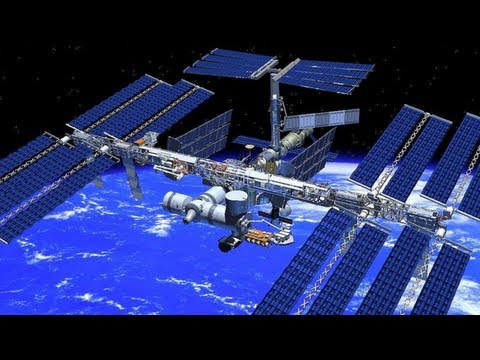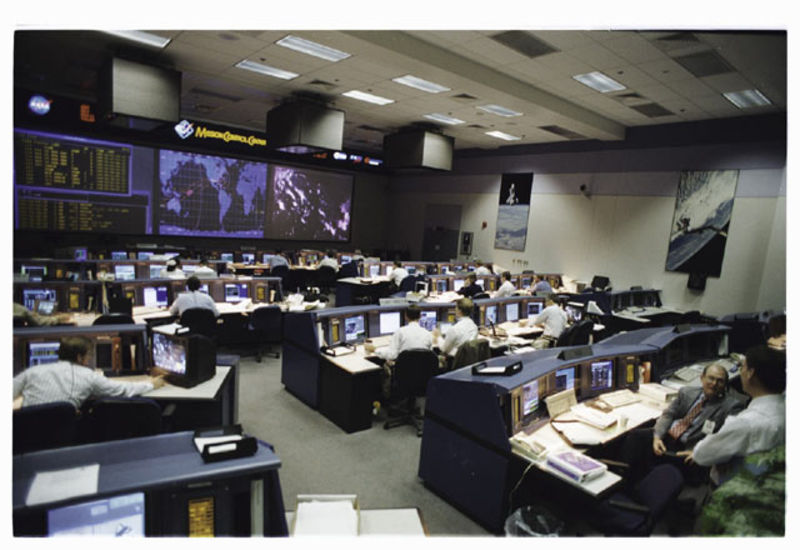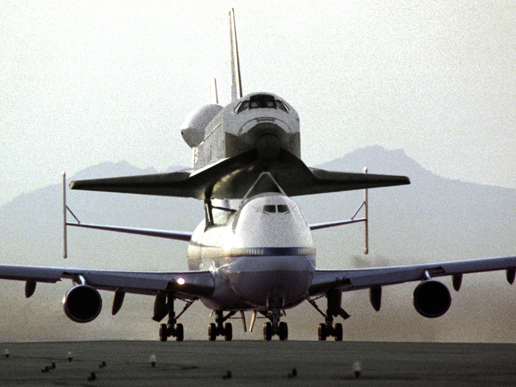
Michael C. Jansen
Judging by my conversations with peers in the industry, it is striking how many engineers grew into their professions by tinkering with junk in their families’ garages. Objects of surprising simplicity and utility were created by eager, inventive young minds, from the stuff stored by can’t-let-it-go-to-waste parents. Along the way we learned and developed a passion for engineering. And it was no big loss if a “junk” contraption didn’t work…
Where does that creative, pioneering, seat-of-the-pants engineer in us go as we mature?
Only rarely, it seems, does this approach survive the “real world.” For example, several years ago one of the engineers in my organization had an interesting idea in reaction to a problem he heard about. Several of the International Space Station (ISS) technical communities needed to collect various types of on-orbit data to validate their respective math models. The necessary instrumentation had been eliminated from the ISS Program during previous budget-cutting exercises. To reinstate even a tiny fraction of the originally requested instrumentation at this late stage of the design cycle would be cost-prohibitive.
Prompted by the Loads and Dynamics community, the ISS Prime contractor estimated alone the integration costs to exceed $24 million for a greatly scaled-back complement of accelerometers. Although everyone involved cringed at the cost estimate, they knew that the traditional approach of routing wiring, scarring the existing hardware designs for instrument installations, and redoing the myriad drawings and interface documents could indeed be that expensive. Everyone, that is, save my colleague, who wondered why nobody seemed to be considering the use of wireless technology. He knew of a small local company that specialized in wireless applications, and which had developed some spread-spectrum radio technology under a NASA Small Business Innovative Research grant. They had produced a low-cost transceiver for him that functioned very well during a recent Shuttle flight experiment.
His idea was simple: incorporate similar technology into small, instrumented boxes that could be velcroed wherever needed on the ISS with a minimum of integration effort. If the boxes were made inexpensive enough, they could be disposable, which would allow a non-redundant system design. If a box failed, simply pull it off and replace it, or cluster several of them in each desired location and remotely activate the redundant units in turn upon failure of the active unit. The possibilities were exciting indeed.
I was asked to lead the exploratory project to determine the feasibility of this approach, then build a prototype system, conduct a flight experiment, and, if appropriate, convince the ISS Program to approve the addition of a multipurpose instrumentation system based on this concept. The problem was that discretionary funds were exceedingly tight that year and my organization could only afford a shoestring budget — maybe $50 thousand if I was lucky. It was an impossible undertaking in a conventional sense; one of the instruments we were interested in cost $23 thousand per unit!
I met with the wireless company’s president, a gentleman with an exuberant, entrepreneurial attitude, who served to energize my “team” (a solitary veteran of the previous flight experiment) and me. We were assured that, despite our budget constraints, almost anything was possible. Were it not for this company’s demonstrated ability to follow through on its claims, I would have been highly skeptical.
Instead, I remembered a friend’s experience. Faced with a six-figure cost for a wave facility test to determine which of several ISS crew-return-capsule designs would be most seaworthy, he built his own wave tank with a few sheets of plywood, foam rubber, some plastic sheeting, and a scavenged wash-machine motor and mechanism. For a couple hundred dollars, he narrowed the design options to two.
I shifted mental gears and adopted a more can-do attitude.
Hence, our project quickly took on a garage-style feel. Since size minimization was critical to our design concept, we scoured the vendor ranks until we found one that made automobile airbag accelerometers the size of pencil erasers. By modifying the signal processing, the mechanism could be adapted to measure the much lower acceleration levels we were interested in. One problem was solved — for $50 a pop.
Similarly, we bought and modified other items until, after a scant three months, we had two working prototype wireless instrument boxes the size of a double-thick pack of cigarettes, complete with accelerometers in three axes, pressure transducers, radiometers, solar-power rechargeable battery cells, radio transceivers, and data processors. Included in our hardware set was a similar-sized transceiver to plug into a standard flight laptop computer from which we controlled the system. All this came to under $40 thousand, including a preliminary round of vibration and thermal-vacuum testing.
The various managers to whom we demonstrated our prototype marveled at the real-time, dual display of acceleration, pressure, heat flux, and temperature data marching across the laptop screen almost as much as at the price tag. A second generation of smaller production units was estimated to cost $1500 per unit, and a comprehensive ISS instrumentation system based on this technology was priced at an order of magnitude less than the $24 million the ISS Program had choked on previously. We were strongly encouraged to proceed with a flight experiment.
We developed the blueprints for a flight experiment that would test the system by measuring the effects of the Shuttle’s reaction control jets as they plumed the Russian space station Mir. Upon conducting initial negotiations with our Russian counterparts, and with the local Extravehicular Activity Office that would have to design the space-walk activity necessary to install our hardware on Mir, I developed a schedule and budget for the flight experiment and charged the hill.
I soon found that the ISS Program was willing to accept my proposal for a risk-mitigation experiment to be flown on an upcoming Shuttle-Mir mission but that I would have to bring my own funding. Here was the Catch 22: the ISS Program was unwilling to fund the development of a system it had no official requirement for, and it was unwilling to acknowledge on-orbit instrumentation as being a requirement until a low-cost implementation was available.
Upon looking for solutions across the agency, I learned of a project with similar goals as ours at another NASA center. They wanted to develop a wireless instrument system to measure structural dynamics and had secured science funding to develop such a system, which they wanted to test on the ISS. It was the perfect match — we had hardware but no money; they had money but no hardware. The other project’s manager eagerly accepted my proposal to combine our projects.
Upon gaining approval for this combined risk mitigation experiment, I left it to accept another assignment, taking with me a new attitude inspired by my experience with garage-style engineering. Our original project, after several incarnations, spawned several wireless instrumentation projects that now support the Shuttle and ISS Programs. All of them are producing more versatile and easily integrated flight instrumentation hardware than conventional aerospace methods allow. They’re beating convention with shorter development times and dramatically lower development and integration costs as well.
Perhaps we should do more of our work in the garage.
Lessons
- It pays to remember the let’s-try-it pioneer attitude that drew us to our profession and, likely, to our employer.
- If a picture is worth a thousand words, a prototype is worth a million. Prototype early and often not only to mitigate risk, but to help management understand the true feasibility/potential of your concept. It’s hard not to get interested in an idea when one sees it embodied in a functional piece of hardware!
- The use of Commercial Off-the-Shelf (COTS) components, combined with an informal quality control/configuration-management environment, enables Faster-Better-Cheaper prototyping.
Search by lesson to find more on:
- Challenging the Status Quo









